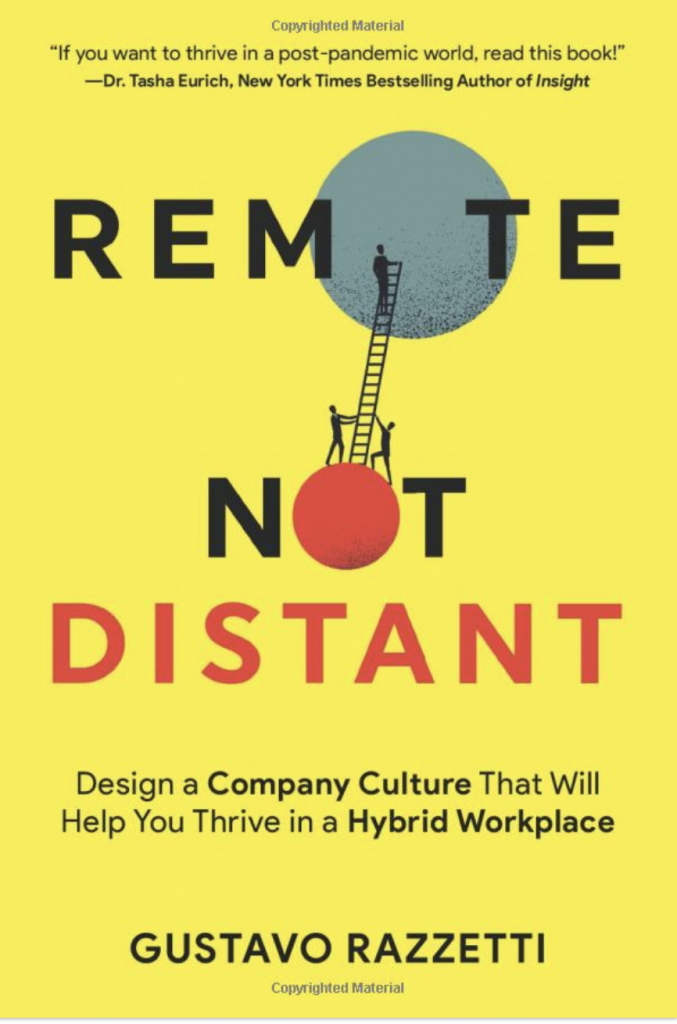Remote Not Distant

Recently we addressed the “5 Shifts to Build a Hybrid Work Culture” Culture by Design, Focus on Impact, Work-Life Integration (not just Balance), Asynchronous Collaboration, and Flexibility.
Ok, we all know in-person is required at the construction workface. We’ve learned you can’t “build a building in your living room”, as a Project Exec assured me during the Covid shutdown. But for office workers, designers and consultants “hybrid” is not new and increasingly in use.
Many companies say, “We’re going hybrid,” but it’s not always clear what that means.
Gustavo Razzetti explains:
“Hybrid” is a spectrum, from companies that require people to show up three specific days a week to those that shut down all but one office location. Defining your model is critical to succeeding in a hybrid workplace. Even more critical is including people in the process.
So, how can you define your hybrid work model?
In Razzetti’s latest, well-researched book Remote, Not Distant (2022, Amazon), he explains in more detail “the different hybrid models. The following steps will help you kick-off the conversation about which model works best for your organization:
- “Be clear. What does hybrid mean to your company? Choose your hybrid model wisely.
- Decide how your approach will affect different areas. For example, [construction and offsite fabrication and] manufacturing are fully in-person, but legal and marketing are flexible hybrid. [As can be some construction office personnel and most designers.]
- Clarify which arrangements will be made at the company level and how much flexibility teams and individuals will have. [Keep in mind that “autonomy” is one of the 3 great human needs and leads to higher motivation.]
- Encourage your team to review the different work modes to design their workday around collaboration, not just schedules.
- Review all your workflows. Will your existing ones work if you don’t have 100% of the people at the office all the time? Design clear norms and rules that cover specific areas such as communication, hiring, or documentation (more on that later).
- Revisit how decisions are made. A hybrid workplace requires distributing decision-making rights.
- Monitor progress. Adapt your model and iterate based on what you learn from your different teams.
- Make sure leaders model the right behavior.”
And always, leverage your Lean learning and practice to assure Respect for People, flow in processes, collaboration, value over waste and optimizing the whole not the piece.
